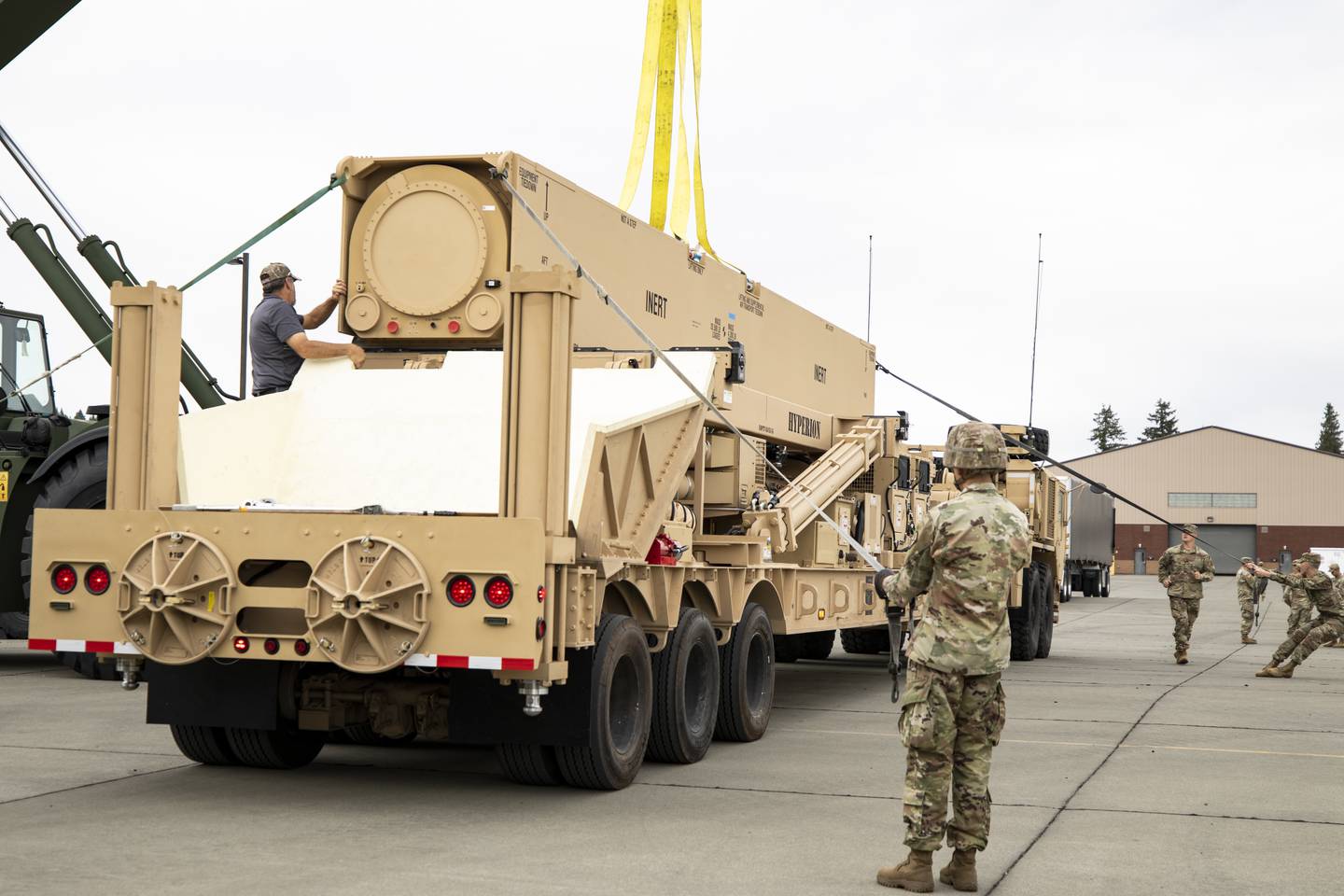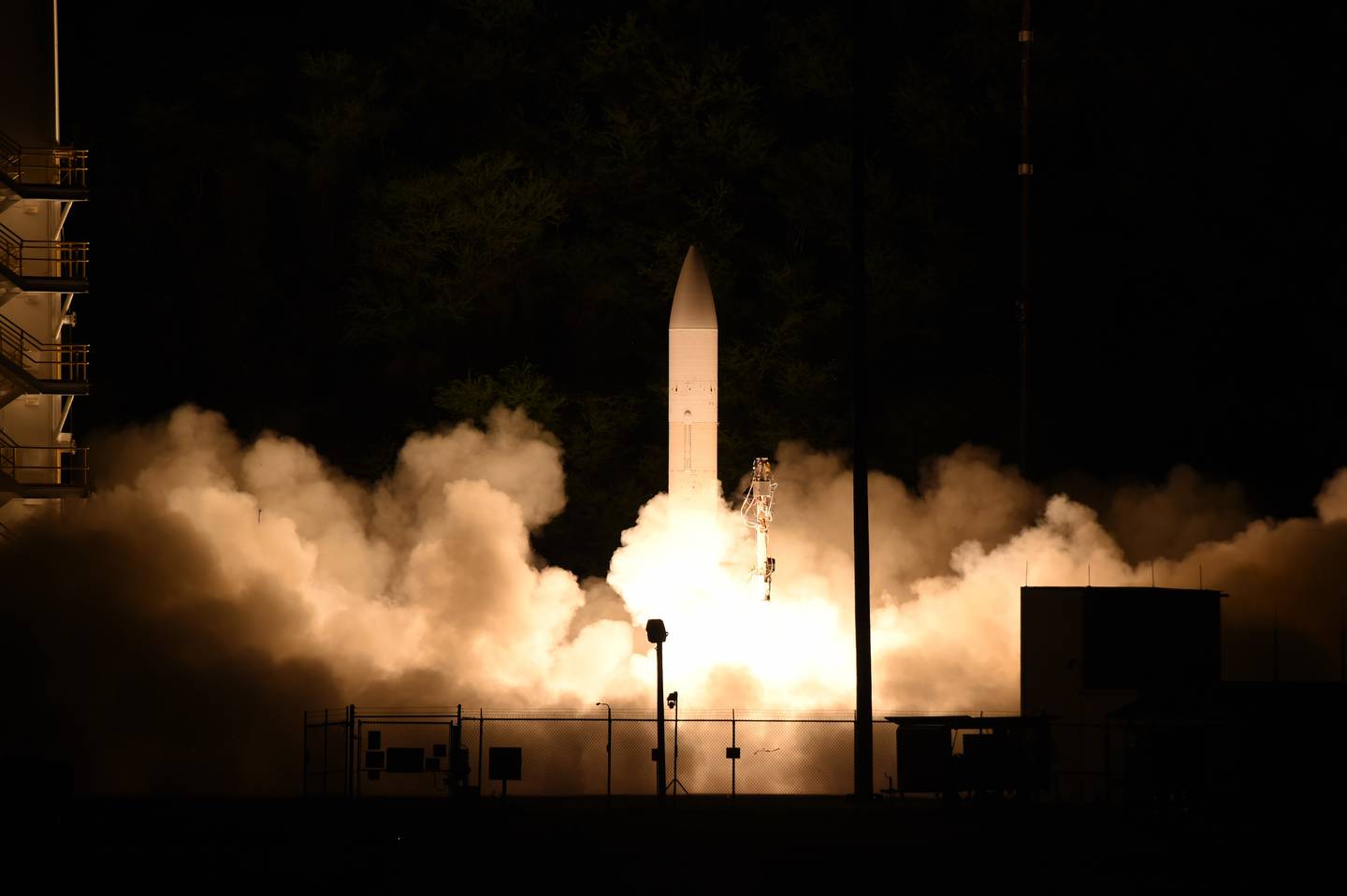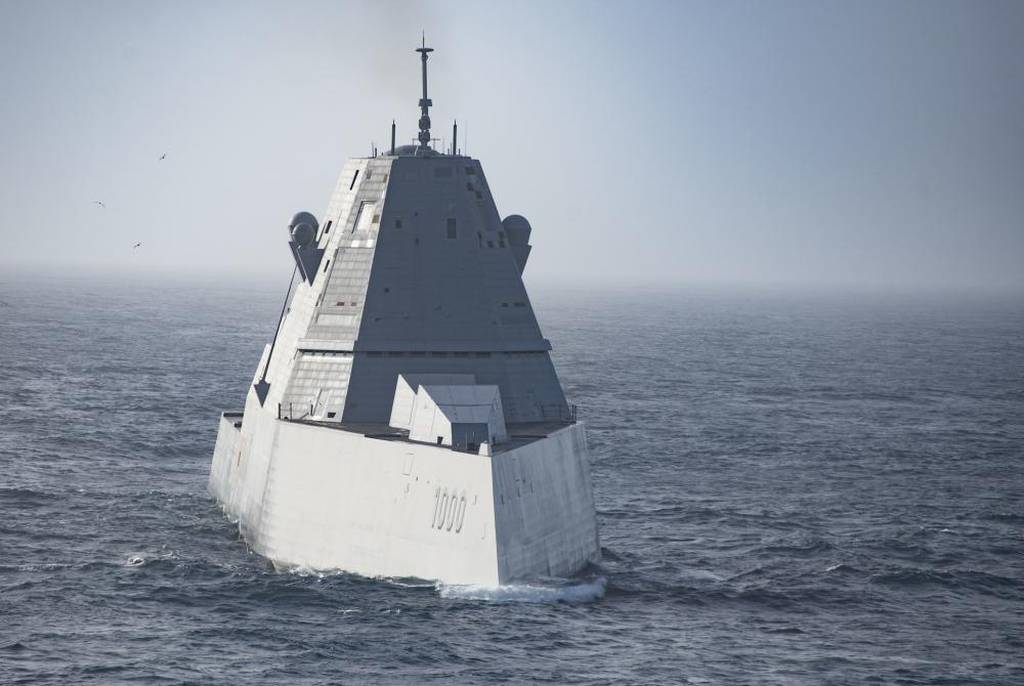ARLINGTON, Va. — The head of the U.S. Navy’s Strategic Systems Programs office is confident the service can field hypersonic weapons on a Zumwalt-class destroyer in 2025 and on a Virginia-class submarine in 2029 despite the significant workload that remains.
Vice Adm. Johnny Wolfe said “time is not our friend” as the Navy races to finish hypersonic missile development alongside the Army by 2023. Next up is designing and testing the integration between the missile and USS Zumwalt’s hull and combat system ahead of a 2025 shipyard period where the weapon will be backfit onto the large destroyer. In parallel, engineers must work through the physics of launching the weapon from under the sea ahead of a 2029 fielding on Virginia-class submarines.
The Navy had previously said the Virginia-class submarines would field the hypersonic weapon, which the Navy calls Conventional Prompt Strike, in 2028. The new date is due to a delay in the planned delivery of the first submarine that will house the large missile — the future Arizona, the first submarine with the Virginia Payload Module — not a delay in the missile development itself.
On the hypersonic weapon, Wolfe said the Navy and Army are in a good place leading up to the Army’s debut next year. He said he was optimistic about how much the services had learned so quickly, despite two live flight tests over the past year that fell short of their full testing goals.
Wolfe claimed success or failure was in the eye of the beholder: the two services have added stretch goals to each of their missile flight tests, so even when a flight doesn’t meet its full objectives, engineers are still learning much faster than they would under a traditional acquisition and test program.
“If we’re going to go fast, and we’re going to deploy a system that, quite frankly, we just decided in 2018 that we were going to put in warfighters’ hands … we’re going to have to lean forward, and we’re going to have to take risk,” he said in remarks at the Naval Submarine League’s annual conference here.
In a June test called Joint Flight Campaign-1, officials wanted to test the new rocket motor booster stack developed by the Navy. The services decided to also integrate the weapon’s glide body, which had already been proven in previous testing, into the setup. Wolfe said the stack worked well and both stages lit off successfully. However, he added, the test weapon did not reach its target due to an unexpected integration issue.
“Within seven weeks of that flight, we had identified what the issue was, we had developed a corrective action, and it is already in the next round that we’re going to fly,” he said.
Lt. Gen. Robert Rasch, who runs the Army’s Rapid Capabilities and Critical Technologies Office, previously told Defense News that “if we would have just declared that all we were going to do was just to shoot up a missile stack, it would have been 100% a success.” Rather, he said, “given the rarity of these events, we always have stretch learning goals,” and that’s where the flight test fell short.
Wolfe also addressed an October 2021 test, Flight Test-3. He said the Army wanted to get additional data to supplement a separate flight test and decided to connect the hypersonic glide body to an old booster stack that had been sitting around. The booster stack had problems and caused the test to fail, but Wolfe said the Army learned a lot during the test, contributing to this development program moving quickly.

The Army will field the weapon next year using a hot launch method from ground-based launchers: the rocket motor will light off immediately, creating a hot cloud of gas near the ground.
Because that hot launch is incompatible with Navy ships, a key effort ahead of 2025 is working through a different in-air launch capability for the hypersonic missiles coming off Zumwalt destroyers. Pressurized air pushes the weapon out of the missile tube and up to a great enough height that the missile can light off without hurting the ship.
Wolfe said the Navy has already shown in testing that it can do this.
Launching from undersea is even trickier: the missile has to exit a submarine’s missile tube, shoot to the surface and up into the air, and then light off while airborne.
Wolfe said the Navy is building its underwater launch test facility in Crane, Ind., already, which will help the service understand the hydrodynamics of the missile pushing through the launcher and the water on its way to the air. The vice admiral noted that a similar mechanism is already in place for the Trident nuclear weapon program shot from ballistic missile submarines and for the Tomahawk missile shot from guided-missile submarines, so he said the fundamentals are there to inform this in-water launch capability for Conventional Prompt Strike.

The Navy will also have to figure out how to incorporate the hypersonic weapon’s combat system, which the Army will field next year, into the combat systems that already exist on Zumwalt destroyers and Virginia submarines.
“We are well on our way because the Army needs it first next year, and one of our tests that we’ve got coming up here in the next year will be with a combat system that will deploy with the Army,” Wolfe said.
From there, the Navy will figure out if that system can be fully integrated into the ships’ combat systems or if it will have to be kept as a stand-alone weapon.
In summarizing the work ahead, Wolfe said no single engineering effort was especially difficult or worrisome, but rather a lot of work exists and the Navy is on tight timelines.
“It’s all about schedule. We understand what the payload tubes look like. … We’re building those for what we’re going to put on Virginia, what we’re going to put on Zumwalt,” he said. “So it’s just schedule that we’re fighting with right now.”
Megan Eckstein is the naval warfare reporter at Defense News. She has covered military news since 2009, with a focus on U.S. Navy and Marine Corps operations, acquisition programs and budgets. She has reported from four geographic fleets and is happiest when she’s filing stories from a ship. Megan is a University of Maryland alumna.








